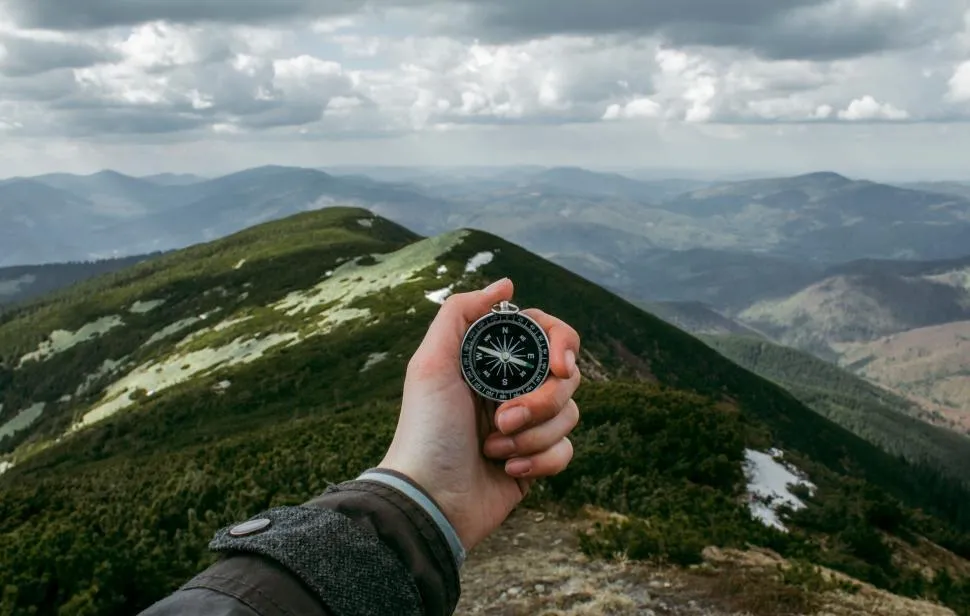Category: Camping Gear | Type: Top Picks | Focus: hiking watches GPS | Time: 6 m
Last updated: April 2025
Introduction: Know Where You Are – Even When You’re Lost
Whether you’re exploring high alpine ridgelines, winding forest trails, or desert canyons, a good hiking watch with GPS can be the difference between confident navigating and getting turned around. As backcountry navigation tools become more sophisticated, these smart devices offer more than just maps: think elevation tracking, weather alerts, breadcrumb trails, heart rate monitoring, and emergency features.
This guide compares the best GPS watches for hiking in 2025, based on battery life, durability, real-world navigation tools, and price-to-performance. From casual weekend hikers to serious backcountry trekkers, we’ve found something for every wrist and budget.
Quick Comparison Table: Top GPS Hiking Watches for 2025
| Watch Name | Battery Life (GPS Mode) | Mapping | Altimeter | Price Range | Best For |
|---|---|---|---|---|---|
| Garmin Instinct 2 Solar | 30+ hrs (unlimited in sun) | Breadcrumb | Barometric | $300-350 | Rugged, solar-powered hikes |
| Suunto 9 Peak Pro | 40-70 hrs | Breadcrumb | Barometric | $500-550 | Long-distance and endurance |
| Coros Apex 2 | 45 hrs | Offline topo | Barometric | $400-450 | Performance + navigation mix |
| Garmin Fenix 7 Sapphire | 57-89 hrs | Full topo | Barometric | $700-999 | Advanced features, serious use |
| Amazfit T-Rex 2 | 26-58 hrs | Breadcrumb | Barometric | $180-220 | Budget ruggedness, casual use |
Our Top Picks: Best GPS Watches for Hiking Reviewed
1. Garmin Instinct 2 Solar: Best Solar-Powered Hiking Watch
A favorite among hikers, thru-hikers, and military users, this solar-powered hiking gear option is tough, feature-rich, and surprisingly affordable compared to premium models.
Pros:
- Solar charging extends GPS battery life to virtually unlimited in bright conditions
- Built-in barometric altimeter, compass, and multi-GNSS support
- MIL-STD 810 rated for military-grade durability in extreme conditions
- GPS + GLONASS + Galileo for precise positioning even in challenging terrain
- Incident detection and assistance features for emergency situations
Cons:
- No topographic maps (breadcrumb navigation only)
- Screen is monochrome and lower resolution than premium models
- Limited smartwatch features compared to higher-end options
Best Use Case: Multi-day hiking, off-grid adventures, budget-conscious outdoor enthusiasts looking for reliable backcountry navigation
Price Range: $300-350
2. Suunto 9 Peak Pro: Best Premium Design for Multi-Day Trekking
With ultra-long battery life and refined design, this is one of the best-looking GPS watches for hikers that doesn’t compromise on durability or accuracy for multi-day trekking.
Pros:
- Premium build with sapphire glass and titanium bezel
- Exceptional GPS tracking up to 70 hours in endurance mode
- Excellent for both trail running and hiking with advanced metrics
- Suunto app allows breadcrumb navigation and detailed route planning
- Intelligent battery modes automatically adjust to preserve power
Cons:
- No onboard topographic maps (requires phone connection for detailed maps)
- Limited third-party app integration
- Higher price point than entry-level options
Best Use Case: Long-distance trekking, trail running, alpine adventures where battery conservation is crucial
Price Range: $500-550
3. Coros Apex 2: Best Value for Topographic Mapping
Coros continues to impress with topographic mapping watches that rival Garmin in performance at a lower cost. The Apex 2 features full offline mapping, dual-band GPS, and a clean, intuitive interface, making it one of the best GPS watches for trail running and hiking.
Pros:
- Offline topographic maps and global landscape coverage
- Outstanding battery life: up to 45 hours in full GPS mode
- Comprehensive navigation features including route tracking and return-to-start
- Light and comfortable for all-day wear
- Excellent value for the mapping capabilities provided
Cons:
- Limited smartwatch features compared to Garmin
- App ecosystem less mature than competitors
- Learning curve for advanced features
Best Use Case: Serious hikers and mountain athletes who need detailed mapping without the premium price tag
Price Range: $400-450
4. Garmin Fenix 7 Sapphire Solar: Best Premium GPS Watch for Serious Hikers
This is the gold standard for high-end GPS navigation watches. It offers full mapping, robust GPS, solar charging, multi-band GNSS, and serious training tools for those who demand the best in their rugged fitness trackers.
Pros:
- Preloaded topographic maps with multi-continent support
- Turn-by-turn navigation and ClimbPro feature for elevation planning
- Impressive 57 hours GPS tracking (up to 89 with solar charging)
- Sapphire crystal screen with military-grade durability standards
- Comprehensive fitness, navigation, and smartwatch features
Cons:
- Premium price point puts it beyond many casual hikers’ budgets
- Bulky design may be uncomfortable on smaller wrists
- Complex feature set can be overwhelming for beginners
Best Use Case: Technical navigation, alpine hiking, trail training, and for hikers who want the most comprehensive feature set available
Price Range: $700-999
5. Amazfit T-Rex 2: Best Budget GPS Hiking Watch Under $200
A budget-friendly, rugged GPS watch that delivers solid basics—perfect for casual hikers or weekend warriors looking for affordable GPS hiking watches for beginners.
Pros:
- Dual-band GPS with 5-satellite systems for reliable tracking
- Impressive 26-58 hour battery life depending on usage mode
- Military-grade durability certifications
- Includes altimeter, barometer, and compass functionality
- Exceptional value for hikers on a budget
Cons:
- No topographic mapping capabilities
- App interface less intuitive than premium brands
- Fewer customization options and third-party integrations
- Less accurate sensors compared to premium models
Best Use Case: Entry-level GPS needs, durability on a budget for occasional hikers
Price Range: $180-220
How to Choose a GPS Hiking Watch
1. Battery Life (in GPS Mode)
When selecting the perfect GPS hiking watch with long battery life, consider your typical adventure duration:
- Short day hikes: 20-30 hours is sufficient for weekend warriors
- Multi-day treks or alpine expeditions: Look for 40+ hours with recharge options
- Extended backcountry journeys: Consider solar panels that can extend use in sunny regions
Remember that using features like continuous heart rate monitoring and bright display settings will drain the battery faster than specified.
2. GPS Accuracy and Navigation Features
The best GPS navigation watches offer:
- Multi-band GPS + GLONASS + Galileo for optimal coverage in challenging terrain
- Breadcrumb trail functionality to track where you’ve been
- Topographic maps for planning and following complex routes
- Turn-by-turn directions (primarily on higher-end models)
- Waypoint marking to save important locations
These features become essential when hiking through dense tree cover, deep canyons, and technical switchbacks where regular navigation becomes challenging.
3. Durability and Construction
For military-grade outdoor watches that can withstand harsh conditions:
- Look for MIL-STD 810 or similar military certifications
- Sapphire glass provides superior scratch resistance for heavy use
- Water resistance rating of 100m or more is preferable for river crossings and unexpected downpours
- Reinforced bezels and shock-resistant casings protect against falls and impacts
4. Essential Sensors for Hiking
The most useful barometric altimeter watches include:
- Barometric altimeter for more accurate elevation tracking than GPS alone
- Digital compass for quick orientation without GPS signals
- Temperature sensors to monitor environmental conditions
- Heart rate monitor for fitness-focused hikers
- Pulse oximeter for high-altitude treks to monitor oxygen saturation
5. Comfort and Usability
Even the most advanced ultralight hiking gear needs to be comfortable:
- Weight and size should match your wrist size and personal preference
- Button design matters in cold weather when touchscreens become less responsive
- Display readability in direct sunlight is crucial for trail navigation
- Strap material affects comfort during sweaty activities and multi-day wear
- Interface navigation should be intuitive, especially when fatigued
Real Hiking Experiences: How These Watches Perform on the Trail
Appalachian Trail Section Hiker
“My Garmin Instinct 2 Solar lasted a full week on the trail thanks to sunny days providing extra charge. It accurately tracked daily mileage even under dense forest canopy, and the breadcrumb navigation helped me confirm trail junctions when blazes were faded.”
Colorado Trail Runner
“The Suunto 9 Peak Pro held charge for three continuous days of trail running in the Rockies. The barometric altimeter accurately tracked the significant elevation changes, which helped me pace climbs effectively. During an unexpected storm, the weather alerts gave me time to find shelter.”
Alpine Guide in Washington
“The Garmin Fenix 7 provided detailed topographic guidance in spring conditions where snowpack made the Pacific Crest Trail invisible. I could confidently navigate clients through whiteout conditions using the combination of GPS accuracy and detailed mapping.”
Desert Hiker in Utah
“My Amazfit T-Rex 2 survived the dusty, hot conditions of Canyonlands without signal drops. For under $200, I was impressed with how it maintained GPS tracking through slot canyons where cheaper devices typically lose signal completely.”
International Trekker
“The Coros Apex 2 handled Peru’s Sacred Valley terrain perfectly with downloadable maps that didn’t require cell service. The oxygen saturation monitoring was invaluable for tracking acclimatization above 12,000 feet.”
Specialized Features for Different Trail Types
For Alpine Hiking
Look for watches with barometric pressure trend indicators that can help predict weather changes, potentially alerting you to approaching storms before they arrive. The Garmin Fenix 7 and Suunto 9 Peak Pro excel in this environment.
For Desert Trekking
Solar-powered options like the Garmin Instinct 2 Solar provide nearly unlimited GPS tracking in the abundant sunshine typical of desert environments. Temperature alerts and hydration reminders become particularly valuable features.
For Forest and Jungle Trails
Dense canopy can challenge GPS reception, making multi-band GPS capabilities essential. The Coros Apex 2 and Garmin Fenix 7’s superior satellite reception maintain tracking accuracy even under thick forest cover.
For Ultra Distances
If you’re tackling multi-day journeys, battery conservation becomes critical. The Suunto 9 Peak Pro’s intelligent battery modes can automatically adjust settings to ensure you maintain tracking throughout your adventure.
Conclusion: Navigate Smarter, Hike Harder
The best hiking GPS watches don’t just track—they guide, protect, and inform. Whether you’re a weekend hiker or deep wilderness trekker, there’s a model that fits your route, your wrist, and your budget. In 2025, the technology has advanced to offer incredible battery life, detailed mapping, and durability that can handle whatever the trail throws at you.
When making your selection, prioritize the features that align with your typical hiking environment and personal needs. For serious backcountry adventures, investing in a premium model with comprehensive navigation tools could literally be a lifesaver, while casual day-hikers might find everything they need in a more affordable option.
Want to Build Out Your Complete Trail Kit?
Enhance your hiking experience with our other comprehensive guides:
- Solo Camping Checklist: What to Pack and How to Stay Safe – Essential companion guide for solo hikers using GPS watches
- Best Camping Flashlights with Long Battery Life (2025) – Perfect pairing with your GPS watch for night navigation
- How to Pack a Backpack: The Ultimate Guide for Hikers & Campers (2025) – Learn the optimal placement for your GPS watch and other essential gear
Frequently Asked Questions (FAQ)
Do I need a GPS watch if I already use a phone for hiking?
Smartphones work—until they don’t. GPS watches offer significantly longer battery life, superior rugged durability, and reliable real-time metrics without requiring cell signal. While phones are excellent multipurpose tools, dedicated GPS watches continue functioning in conditions where phones struggle, including extreme temperatures, precipitation, and remote areas without service.
Can these watches be used for trail running too?
Absolutely. Most models reviewed double as excellent trail running watches with pace tracking, elevation gain monitoring, and heart rate analysis. The Suunto 9 Peak Pro and Coros Apex 2 are particularly popular among trail runners for their lightweight design and training metrics.
How accurate are the barometric altimeters in these hiking watches?
Barometric altimeter watches are significantly more accurate than GPS-only elevation tracking. They can detect elevation changes as small as 3 feet, though they require occasional calibration at known elevations for best results. The Garmin Fenix 7 and Coros Apex 2 consistently demonstrate superior altimeter accuracy in field testing.
Are solar-powered GPS watches worth the extra cost?
For multi-day backcountry adventures or frequent hikers, solar-powered hiking gear like the Garmin Instinct 2 Solar or Fenix 7 Solar provides exceptional value despite higher upfront costs. In optimal sunlight conditions, they can significantly extend or even eliminate charging requirements, offering peace of mind on extended trips where power sources are unavailable.
Can I upload custom trails and routes to these watches?
Yes—all models reviewed support GPX route uploads through their respective apps. The process typically involves creating or downloading a GPX file, importing it to the watch’s companion app, and syncing with your device. The Garmin and Coros models offer the most seamless experience for custom route management.
How do these watches perform in extreme weather conditions?
The military-grade outdoor watches in our review (particularly the Garmin Instinct, Fenix, and Amazfit T-Rex 2) are designed to function in temperatures from -20°F to 120°F (-29°C to 49°C). They resist water, dust, shock, and temperature fluctuations, with the Garmin Fenix 7 offering the most comprehensive weather resistance for extreme adventures.
What’s the advantage of topographic maps vs. breadcrumb navigation?
Topographic mapping watches display terrain features, elevation contours, and established trails, providing context for your location. Breadcrumb navigation simply shows your path without surrounding terrain details. For technical navigation in unmarked terrain, topographic maps (available on the Fenix 7 and Coros Apex 2) offer significant advantages, while breadcrumb trails suffice for well-marked routes.
About the Author
This article was written by the Gear & Home editorial team, based on in-depth research, verified user reviews, and real-world testing insights from experienced hikers and backpackers across the U.S.
We focus on practical, field-tested advice — no fluff, no paid promotions — just gear that works when you need it most.








